








BLANK
[Enter your text here]
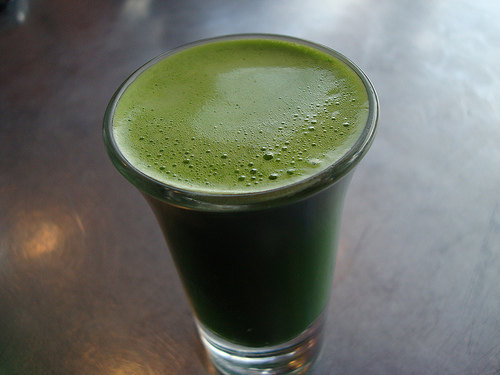

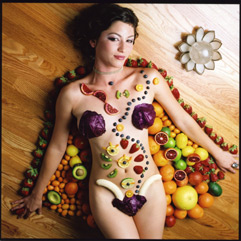
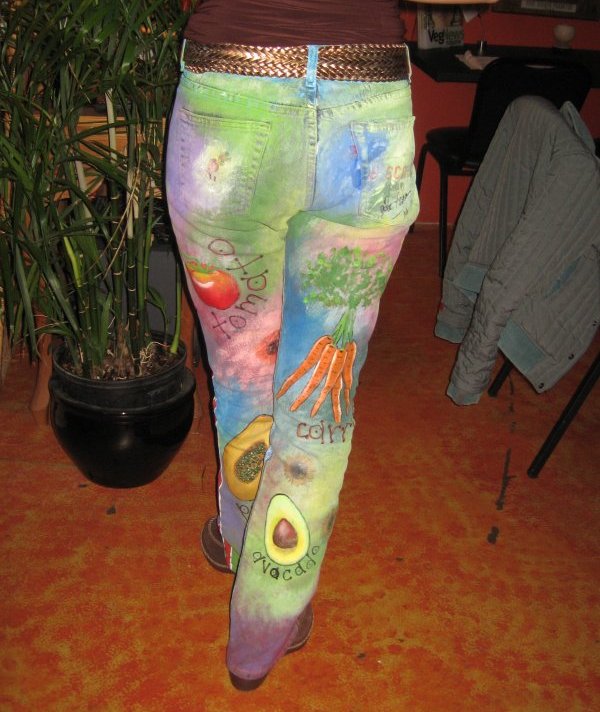




Wholesale to the Public
Your Wholesale Raw Foods & Equipment Connection
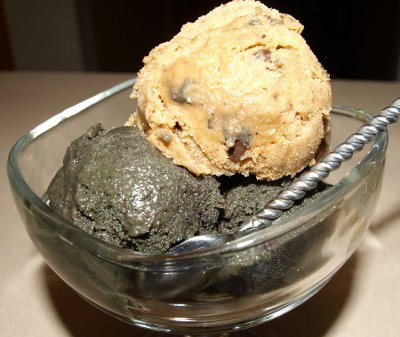
At wholesale prices, you can make your own lavish ice cream. You don't have to settle for extracts. You can use
beans from Tahiti, you can use jumbo sized truly raw cashews, not the cashew pieces.
You will not find the type of raw ice cream I make sold in stores or in restaurants. First, the ingredients restrict them from making it and you probably wouldn't pay the price of it in the first place. Just one vanilla bean can cost 10 bucks a bean. I use at least two beans in each serving. That's $20 right there. But then again, I am fortunate to get these beans wholesale.
Another reason this ice cream cannot be served in a restaurant is because it has to be served within minutes of making it. It cannot be hard frozen. It has to be served just under the freezing point. It cannot be stored in a freezer. After you read this page you will understand the difference between hard freezing and soft freezing.
Warning: If you see this sentence, stay far away from this recipe. "Blend all ingredients and then freeze. Take out
of the freezer and re-blend and serve." I do not own any recipe books. My raw ice cream recipes will not taste good
if they are frozen. As you read this page, you will get to know why it is important NOT TO FREEZE your raw ice cream.
The base for my raw ice cream consists of coconut water, young, jelly-like coconut flesh, stone ground Tahiti Vanilla caviar, fresh irish moss, and brine free salt. I substitute the coconut water for the nut milk of choice if I want a more nutty taste. I rarely use coconut oil as coconuts are always available where I am. Once I have the base I want, I can add the type of cacao or mesquite to enhance the flavor. When using nut milk, I use a crystal clear honey but this year I got outbid and have to settle for the lighter grades. Too bad I didn't order more last year when it was just harvested. I put the ice cream mixture in my ice cream maker that never brings it to a cold freeze, but a soft freeze. I like my ice cream dense and creamy and do not like it real airy. If I am using a blender, I immediately pump the air out of the mixture before making ice cream. If anyone has ever frozen raw ice cream, you will notice that if you fill a cup of it to the top, it will get that frozen foam on the top. A press is the best way to make ice cream without oxidizing any of the flavors.
I will try to describe how the raw ice cream that I make tastes.....
When you eat it, since its soft frozen, there is always a little wetness before the more dense ice cream under it. Right when you put the first bite to your mouth, you first can't help but notice the aroma from the vanilla. Have you ever smelled Angel Perfume and instantly know what they are wearing? Go smell that perfurme if you haven't. Its very strong and it has a vanilla smell. After the aroma hits you from the ice cream base, the flavors hit you but it's too cold to chew so you let it melt in your mouth. You just kinda
suck on the spoon and get those flavor sensations with every lick. You don't eat this type of ice cream.
You savor it.
Setting the Mood
The best time to savor this ice cream is NOT AFTER A MEAL. You want to eat it when you have a sugar craving. It's at the time when you don't have anything sweet and you go or send someone out to the store to pick you up something in the middle of the night to get something and bring it back. It's when you are at the beach and anything with liquid would satisfy you. It's not when you are already full and you will not appreciate this ice cream if you are already full. I eat my ice cream right out of the ice cream bowl since the bowl is still frozen. I want to keep the soft frozen consistency. I don't want a milk shake!!!!! If you are eating it with friends, get some nice ice cream bowls and a scooper and make it all professional with professional tools.
Sight
A lavish raw ice cream should not be lumpy. It should be as soft as the creamiest frozen yogurt that you use to get from the yogurt stores in the mall from those machines. This is soft serve ice cream. You can sink a spoon right through it. It's not hard like frozen ice cream. Nothing is solid frozen about this ice cream. There is NOT ONE SINGLE ice crystal because it was never frozen hard. It is smooth and doesn't look "whipped" since the air is pumped out before going in the ice cream maker. If the vanilla wasn't added, it would look as white as Liquid Ink. If there is any brownish parts from "old coconuts" I won't use it. I won't even use the coconuts that give a light brown or a slightly pinkish color. My ice cream is pure. It's simple. It has the best ingredients and needs no fillers.
EXPERIENCE: Make a batch of raw ice cream. Eat one right out of the ice cream maker and freeze 16 ounces of it. Store it in the freezer until you want ice cream the next time. Let it thaw a bit then put it in the blender or a Champion juicer if you put the ice cream recipe in ice trays. Experience the difference in taste after it is hard frozen and compare to the soft frozen version. You tell me if there is a difference in taste.
Sound
When you eat this type of ice cream, you won't hear any ice crystals. If you don't know that sound, it sounds kinda like eating snow where those fine ice crystals make a sound and even a cold shock that cause tooth pain. This is ice CREAM. It is dense. If you have only eaten cold frozen ice cream you probably haven't experienced this type of ice cream. You cannot commercialize this ice cream because it has to be eaten just after it's made. It cannot be made in large batches and stored for resale. You won't hear the sound of taking your spoon and trying to use force to get a scoop out.
EXPERIENCE: Go to an ice cream shop and listen to the "tear" that is made when a scoop is taken from the batch. I am not sure why I call it "ice" cream. Close your eyes when you chew it. My ice cream makes no ice sound when it's chewed. This is a soft semi-frozen cream that just happens to be enhanced with vanilla and various nut meats.
You will see why the ice cream I make cannot be saved or made in large batches. You can do it but with these types of ingredients, you would totally be wasting your money. You might as well buy cheap ingredients if you plan on freezing it.
Touch and Smell
I love eating ice cream right out of a coconut.
Most of my raw ice cream smells like vanilla. This is not the vanilla smell from extracts. This is the smell from freshly cured Tahitian vanilla beans grown in Tahiti. It is not a smell for beans grown elsewhere. There is something about beans from Tahiti that make it the most prized bean in the world. The smell of my ice cream is never woody. It has the highest floral notes of all vanilla. It smells just as good as it tastes. The touch has a fullness to it. If you try to pick up a piece of ice cream with your fingers or a spoon from the ice cream maker when it's done, you turn the spoon upside down and it stays. It is not runny. It has great consistency. I don't try to get quantity when making raw ice cream. I would rather have 1/4 the portion than have some watered down, ice crystal ice cream.
EXPERIENCE: Before you drink the take your first bite of ice cream, sense the aromas from the tropical coconut smell and the vanilla oils. Half of the experience eating this ice cream involves smell. To show how important smell is when eating ice cream, hold your nose and block the aromas and see if you have the same experience. It amazes me when people sit in a yogurt shop and eat their yogurt while smelling that smell from all the yogurt machines. Go into a yogurt shop and notice that each shop has a distinct smell based on all the flavors that day.
Mouthfeel
The mouthfeel of my ice cream depends on how much irish moss I add. Too much can make it taste like mouse and not ice cream, so be careful how much you add. Be careful to make sure your vanilla beans are micronized. You don't want to be spitting out vanilla skin fibers. Another thing that effects mouthfeel is if I add an aggressive probiotic. Eating ice cream with a billion living organisms swimming around gives it an extra kick. The probiotics eat the sugars and they grow overnight. I usually use the coconut water to breed it. But, if it's in too long, it can eat too much and become horrible tasting. The species I use is so strong that it will digest an entire raw steak in 3 days. Yea, it's that aggressive!
Have a 23K gold sprinkles nearby. Have some fresh raw private estate chocolate syrup or fudge to put on it if you need a little more texture. It's your ice cream. It's your own recipe creation. Your mind are the recipe.
I rarely add toppings. That takes away from the ice cream. But if you desire texture, be my guest. Just like ordering a steak in a fancy restaurant... you don't put ketchup on it do you?
EXPERIENCE:
If you make good ice cream it's good by itself. If you want the mouthfeel of a creamy almond milk, don't go cheap and try to add an extra cup of water to get more "milk" from your almonds. Just make a smaller batch. This is a treat. This is not to see how much bulk or quantity you can get of of your ingredients. You can't make good ice cream really cheap. If you don't have the money to add all those Tahiti vanilla beans, then make a portion. You don't need a whole quart. Experience the treat, not a meal.
Taste
I do not put anything in my ice cream that I normally wouldn't eat by itself. If I don't like the bitter skins of the almonds to make the base, why use the skins. I am all about using the white filets just like my almond milk. Sometimes I use fresh cracked Hawaii macadamias that were just picked. I won't use vanilla that tastes bitter. I love the Tahiti vanilla so much that I always eat a bean or two and suck the nectar out as I make ice cream. It's just a little treat that I look forward to. If I am using beans instead of caviar, I will soak the beans over night to get them more plump so they will be easier to grind.
I challenge anyone else to make raw ice cream as good as I make it. I go to potlucks and after all the desserts are still around, my ice cream doesn't even last for the last people waiting in line. I cannot leave the potluck with people not asking me for the recipe. I don't have a recipe. I make it differently each time and it never screws up.
If you take a freshly made soft raw ice cream and put it in your freezer and then re-blend, it will taste nothing like it did. If you really need to preserve your food by cold freezing and you want to sacrifice nutrient loss and its vibrant taste, then, by all means, freeze it. With my recipes, everything is eaten within seconds of preparation. I don't make a dozen pints of ice cream per batch and freeze them all to save for later.
EXPERIENCE: Frozen food is not raw food. The electrical vibrance is totally destroyed. I strongly suggest buying an ice cream maker that does not have a freezer built in as you will never have to worry about a hard freeze. If you want to taste what real raw ice cream should taste like, DON'T FREEZE IT. Just like cooking lowers the vibration of food, so does freezing. I recommend buying one of the $49 dollar ice cream makers by Cuisinart. Anything more fancy or with built in freezers will never be as good, in my opinion, as the old fashioned types that you have to freeze your bowl first.
LAVISH CHOCOLATE
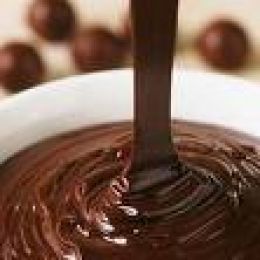
I have worked for years trying to find special, rare isolated cacao trees from private cacao tree owners.
The cacao beans range in flavor from very distinct floral to strong cocoa and coffee to nutty flavors with
hints of citrus.
Some beans are very forward and chocolaty and woody and some are very bright with notes of plum, berries,
and hints of cedar.
I have crafted my chocolate bars over the years as I find rarer ingredients. My bars are very rich and does not
lack complexity and is as full bodies as you can get. I feel my bars are exceptional in quality. Every ingredient
balances each other out. The brine free salt to the caviar from jumbo Tahiti beans to the crystal clear honey that
hasn't crystalized yet to the freshest beans. As you eat my bar, the flavor evolves as you eat it. You only can know what this is like if you experience it.
The following recipe is made for the chocolate lover. The best chocolate in the world simply is not
available at even the highest class market. Unless you have a month to stone grind the vanilla caviar,
you will never get the texture and consistency of this chocolate.
Beyond your wildest imagination, this is the richest chocolate you will ever eat. Some of us have
purchased raw chocolate and high cacao content bars only to be bitterly disappointed, literally, but with
ingredients like these it is virtually impossible to be let down.
The best chocolate requires less sugar and fillers. This is the most expensive chocolate you can make.
But I strive to make it affordable, at least for a privileged few. WARNING: Don't try this recipe at home
with your own ordinary ingredients!!!!
Setting the Mood
A raw chocolate bar should be eaten at room temperature in a relaxed environment. At this temperature, the magical chocolate
is at the ideal state to melt lusciously in your mouth. When eating such delicacies one should reside in place where there are no
distractions to take the focus off this ultimately pleasureful chocolate experience. A little bit of your favorite quiet music can help
set the mood. You should strive to open the senses and fully dive into the holistic experience, that is, eating the world's best
chocolate.
After much experimentation, I have found that the best time to eat chocolate like this is early in the morning when your palette
has yet been exposed to any other tastes and sensations. Another great time is after a shower and relaxation when you have a
clean aura to fully access the chocolate energy.
Have a glass of purified water nearby and rinse your palette. Do not make use of outside flavors as they interfere
with the experience. In the event that you are tasting multiple different chocolates, allow a few seconds between bites and rinse
your mouth with water each time before a new flavor tasting.
If due to logistics you cannot taste the chocolate in the morning then make sure you chew some soaked wheatberries or
something very plain to cleanse your palate. If you have eaten ate some very spicy food earlier, this will influence the way you
decipher the chocolate tastes. If you truly want to experience powerful chocolate, inviting all your five senses (Smell, touch,
sight, sound, and mouth-feel) to participate is of paramount importance.
Sight
A lavish raw chocolate bar has a glossy and even surface. The color
is shiny with the same throughout with no bloom or pitting. Bloom rarely happens because the chocolate is
eaten just after it's made unlike raw chocolates that are stored which can be exposed to moisture and varying
temperatures. Some stored chocolate is exposed to humidity in stores which can cause blooming. Sometimes the
chocolate is just simply old. I have eaten raw chocolate bars that were stored and it seems I always get a bar where
the edges are beat up and crumbly. I never know how many hands have touched my bar, how many energies were
impressed upon it, if it was bought and returned by a customer. Unless you make your chocolate yourself, you can
never know.
EXPERIENCE: What color is your raw cacao bar? Is it dull or shiny? What is the texture? Does it melt
when you hold it between your fingers? If it doesn't it can have too much cacao butter. Too much oil makes
an inferior raw chocolate bar. A beautiful raw chocolate bar has a smooth texture and very glossy. It looks
and smells just as good as it tastes. I can usually tell which type of cacao beans were used by the color of
the bar. The darker brown bars have a different taste than the lighter color bars, which usually have Criollos.
Some bars have blends of different types of beans, giving off a more coppery color from blends where the
reddish-brown estate beans are added.
Sound
When you get the bar, you either take a bit out of it or break a piece off. The sound that is made when you break off a piece of
chocolate in two is called the "snap". A crisp sounding snap comes from a bar with high cacao content which has been properly
tempered. A bar with too much oil or emulsifiers will have little to no snap. The more of that crisp snap sound, the more you will
like the bar. Don't go for too much snap because that is a sign that there is not enough cacao butter. You have to find just the
right balance for this snap and a great melting point where the chocolate is not too dry or not too oily. The last thing you want is
a powdery texture. Raw chocolate should never crumble of bend, even at room temperature.
EXPERIENCE: When you break your raw chocolate bar in two pieces, listen for the clean, crisp snap.
Touch and Smell
Our olfactory sense, or our sense of smell, is perhaps our most powerful one. We smell things long before we touch or taste
them. Studies have shown that sense of smell has incredibly strong connections to memories, especially childhood ones. Smell is
the determinant in whether or not we eat something. Our sense of smell is closely related to our sense of taste. Flavors are
usually 75% smell and 25% taste. Just like fine wine, olive oil, and cacao beans, ingredients to make raw chocolate should have
robustly distinct aromas. The aroma is indicative of where and how the cacao was grown in addition to what was grown around
them in a synergistic manner. You can get the best criollo beans from Bali, Venezuela, or Bolivia. Each origin has it's own aroma.
Some have notes of spice and cedar while others have notes of cream and butter, and other more fruity notes.
As you experience different cacao beans, you will get to know each variety. Smelling is so important so keep
rubbing your bars to get to know these notes. Be sure to keep your eyes closed and be in a quiet and peaceful place.
EXPERIENCE: Before you start rubbing your chocolate, it bar should be dry and not melted. Start rubbing
the bar between your finger and your thumb to release the aromas. Do this before you ever put the chocolate
in your mouth. INHALE......... and breathe, know this aroma and identify it.
Mouthfeel
Mouthfeel is what you experience when you put the chocolate in your mouth and included in this is the aftertaste after you have
swallowed. A perfectly crafted raw chocolate will dissolve in your mouth immediately without more than a bite of chewing. A
other worldly chocolate can just be melted in your mouth without chewing at all.
Our body temperature is 98.6 and chocolate should melt at 97 degrees. The textures can be smooth or gritty
and it can have creamy feel or a waxy feel. Waxy chocolate is from too much paraffin and will leave a waxy
taste in your mouth. I do not like chocolates with extra cacao butter to smooth out its texture. If smoothness is desired, coconut butter is best for this.
EXPERIENCE: Break off a piece of raw chocolate and put it on your tongue. It should feel firm on your
tongue (DO NOT CHEW IT YET). Let the chocolate melt on all over your tongue. Experience
the melting point and texture. Is it smooth? Is it grainy as it melts? Is the chocolate fatty or does it melt
slowly from not enough cacao butter? If it is grainy or too oily, spit it out immediately. This is an experience
you do not want in your memory of chocolate. After you eat the first bite do this over after your palate has
been coated. Chew it slowly this time instead of melting it on your tongue. Keep looking for consistency.
Taste
The taste of raw chocolate varies based on the ingredients you use. Each type of bean
will give off different flavor notes. There are over 500 flavor profiles in cacao beans and most people never
experience anything but the common notes from cheap chocolate. Not all of these notes can be tasted. Some
can only be smelled. I don't believe there is one recipe for everyone as different people like different tastes.
Some people like a more bitter chocolate. Some like a lighter and some a heavier mouth-feel. Some chocolate
has a metallic taste that is bitter and has a bad lingering aftertaste. Some chocolate is too rich and
overpowering. Some people just want something sweet while others look for subtle flavors.
EXPERIENCE: Put a piece of raw chocolate on your tongue. Allow it too melt without chewing but by
moving the chocolate on all the taste buds around your entire tongue. This is especially important because
your tongue tastes different things on different parts of the tongue. The tip will taste the sweetness, the sides,
the salty and sour taste, and the back, the bitter. As a chocolate connoisseur, I don't taste all the notes right
away. I taste the dominate notes right away and then after it melts, the secondary notes. The aftertaste is
another thing I look for. These ingredients are very expensive, especially the vanilla caviar and private estate
grown cacao beans I use. I am not interested in a taste that leaves my mouth too quickly. I want the flavors to
linger in my mouth after I have finished each bite. I am paying a lot for these ingredients and I am not after a
quick chocolate thrill.
Final Words:
Never store your chocolate in the fridge. In the upper 60's is the best temperature to store and eat chocolate at. I do not like that whitish "sugar bloom". It won't hurt you but totally messes up the taste. There are so many raw restaurants that store their chocolates in the fridge display case and it really bothers me. I have even seen water droplets of moisture at these places too. It seems that every time I try someone's chocolate, it breaks and snaps differently. Most of the time, I hear the snap because it's just cold out of their fridge. Too soft is not good either. As I snap off a piece, I usually put my nose right up to it and try to smell any distinct aroma. I can usually pick out where their beans came from right there by the aroma. If I don't like the smell right then, I WON'T EAT IT. I don't even need to taste it at this point to get an impression. Most people that
give me chocolate at the potlucks I go to ALL SEEM TO USE THE SAME BRANDS OF CACAO. There's no distinct flavors such as citrus, smoke, mushroom, wood, caramel, or vanilla (almost always some cheap extract. Just as important as the taste, the aftertaste is just as important. I want to offer people the experiences that rarely people get to try. I have access to various premium beans. You want citrusy. I can get it. You want woody or spicy. I have that too. You want a caramel taste. I have it. I will give two samples of any foods on my site. Contact me if you want
to try a taste. Totally free of charge.
Dehydrate 52 Mineral Kale leaves
Cost per leaf is $4.00. $8 Leave minimum
Quanties are limited during off-season
My kale chips are gone at every party. You will see leftover potato chips and dips but never my kale chips.
The difference between the way I make kale chips is in my ingredients and how I dehydrate it. I am very picky about the nutritional yeast I use. You can get really pale yeast and you can get the dark yellows. Each type of yeast has a different flavor profile. You want cheesy? Then get to know the type of yeast you use. I also use the same olive oil I use for my Caesar salads and humous. The brine free salt gives these chips the kick it needs. I might add a few fresh spices depending on who I am making the chips for but other than that this is really a simple recipe.
Also, I don't use a dehydrator with a fan. I want the least air exposure I can get. My wooden dehydrator has a vent and the moisture naturally goes out by the way my dehydrator is designed.
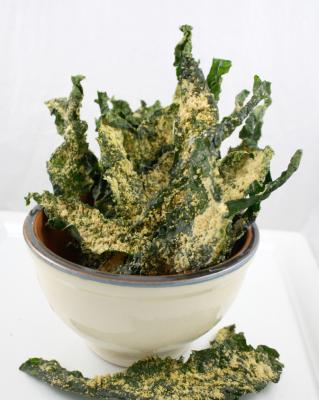
LAVISH KALE CHIPS
LAVISH CEASAR
LAVISH HUMOUS
LAVISH VUDGE
LAVISH PIZZA
LAVISH MACAROONS
LAVISH PUDDING
LAVISH GRANOLA
LAVISH ALMOND PATE
LAVISH CHEESECAKE
LAVISH GREEN SMOOTHIE
LAVISH FRUIT SMOOTHIE
LAVISH CUPCAKE
LAVISH COCONUT CREMES
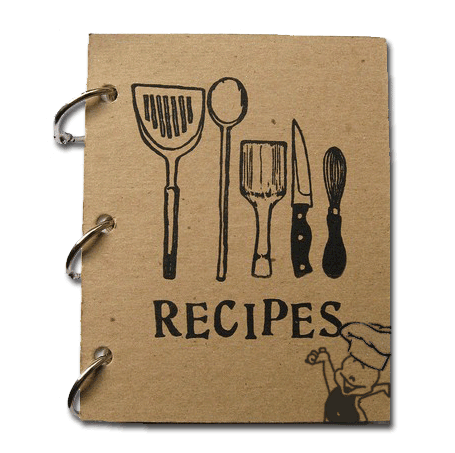
Update: Our recipe book is being edited as we are getting new ingredients. Look for our book shortly.
DO NOT TRY THESE RECIPES AT HOME
The recipes in this book are written for a "boss". If you substitute cheaper, lower quality ingredients in this book it will not create the same taste and mouthfeel. Each recipe is crafted and pH balanced with carefully chosen ingredients. The flavors sensations of my recipes will carry you away to another world. My recipes
will involve almost all your senses with each bite to give a global experience.